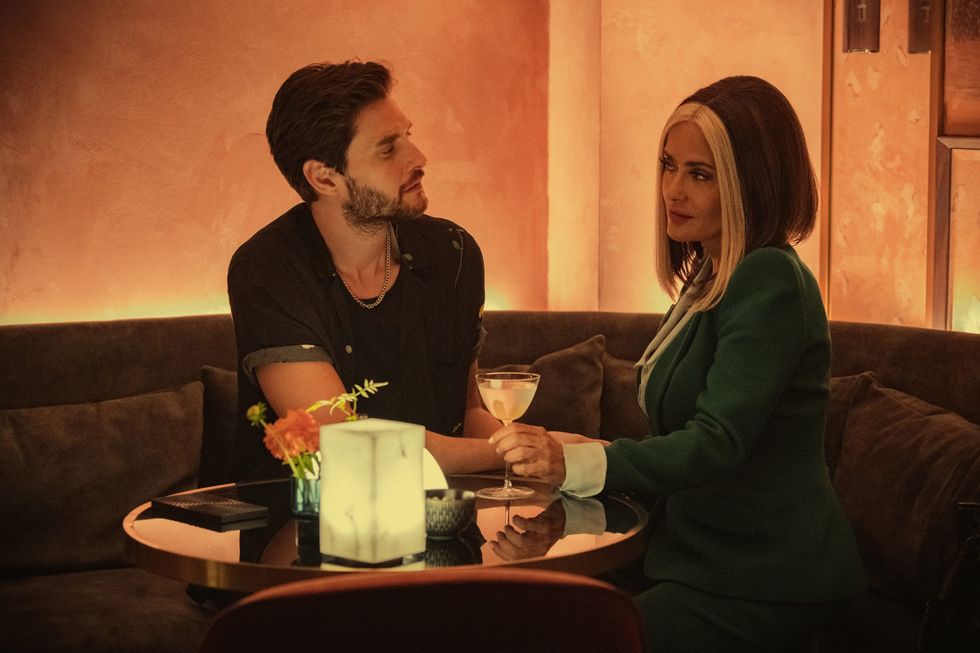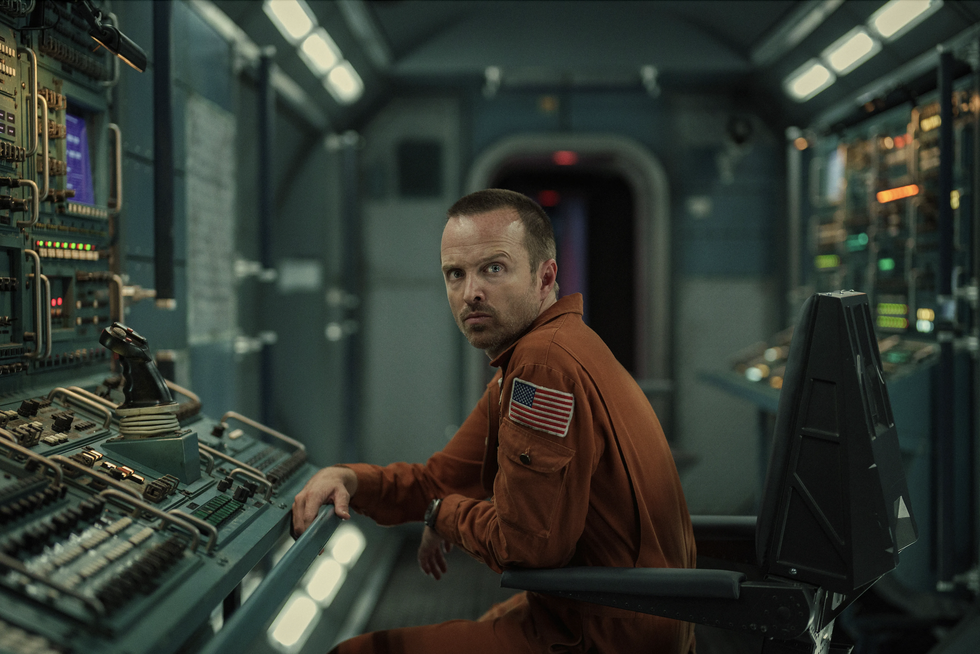The sixth season of Charlie Brooker’s dystopian anthology series Black Mirror is now streaming on Netflix. As in previous installments, each episode serves as a self-contained short film and a cautionary tale about human beings and our relationships with technology and social media. But these stories aren’t as disconnected as you might first believe.
Brooker has a penchant for including references to previous characters, settings and storylines in new episodes of the show, and Season 6 was no different, seemingly proving once and for all that every single one of these sobering morality plays occurs in the same extended universe.
Here’s every Black Mirror Easter egg from Season 6. Needless to say: spoilers follow.
The fictional Streamberry streaming service depicted in this episode is, in itself, a sly nod to Black Mirror‘s home on Netflix (it originated as a Channel 4 show in the UK), but the home screen on Joan’s TV also features several in-universe TV shows and films: Space Fleet, the Star Trek analogue from “USS Callister”; Finding Ritman, a documentary based on the 2018 interactive movie Bandersnatch; Hot Shot from “15 Million Merits”; and Loch Henry: Truth Will Out, the true crime documentary from the very next episode.
“Joan Is Awful” also alludes to Smithereen, the Twitter-like platform from Season 5’s “Smithereens,” and a post from Lacie Pound (Bryce Dallas Howard’s character in “Nosedive”) can be seen on Mac’s phone.
Additionally, during the scene where Joan (Annie Murphy/Salma Hayek) meets Mac (Rob Delaney/Ben Barnes) in the hotel bar, the song “Anyone Who Knows What Love Is” by Irma Thomas can be heard. This song has featured in several previous episodes.
The most obvious Easter egg in this true crime satire is the heavily referenced fictional documentary The Callow Years, which purports to tell the story of fictional Prime Minister Michael Callow (Rory Kinnear) from the very first episode of Black Mirror, “The National Anthem.” Callow is mentioned again on the front page of a newspaper pictured at the end of “Loch Henry,” with a headline reading that he now “owns a zoo,” a dark joke referring to his actions in that episode. (Another documentary mentioned in “Loch Henry” make reference to “San Junipero.”)
Young filmmaker Davis’ laptop is covered in stickers with visual iconography that viewers will recognize; most notably Waldo, the blue bear from “The Waldo Moment,” as well as the “Arkangel” symbol and the glyph from “White Bear” which recurs throughout the series.
Speaking of that glyph… when Rory Culkin’s cult of Manson-like followers break into the home of David (Josh Hartnett) and murder his family, they daub a familiar-looking symbol on the wall in blood. The White Bear icon has become one associated with violent acts ever since it first appeared in Black Mirror, an episode which revolved around a shocking child murder and brutally executed subsequent means of punishment.
“Mazey Day”
Like “Beyond the Sea,” this episode’s period setting means it’s light on connections to the wider Black Mirror world—although we do get a mention of Sea of Tranquility, a fictional TV show referred to in the background of several past episodes.
“Demon 79”
The White Bear glyph reappears in this episode, but even more disturbing is the glimpse we get in one of Nida’s (Anjana Vasan) premonitions of the robot dog from “Metalhead.”
“Demon 79” also features a politician named David Smart, who appeared earlier in the season as a headline in an old newspaper in “Loch Henry.”

Philip Ellis is a freelance writer and journalist from the United Kingdom covering pop culture, relationships and LGBTQ+ issues. His work has appeared in GQ, Teen Vogue, Man Repeller and MTV.




Comments are closed.